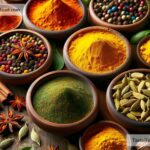Unique Seafood Dishes of Coastal Indigenous Peoples
Coastal regions provide people with an incredible variety of seafood. For thousands of years, Indigenous peoples who live near the ocean have developed simple yet flavorful seafood dishes that reflect their deep connection to the land, water, and culture. In this blog, we’ll explore some of these unique meals, showing how coastal Indigenous communities use local ingredients creatively and sustainably to craft delicious dishes.
The Relationship Between Indigenous Peoples and the Ocean
Indigenous peoples who live by the sea often see the ocean as sacred. It provides food, connects people to their ancestors, and shapes their way of life. Fishing isn’t just about catching food; it’s about respecting nature. In many Indigenous traditions, fish, shellfish, and ocean plants are harvested carefully so they don’t harm the environment or the future supply of food. This sustainable way of living has been passed down through generations.
The seafood dishes prepared by coastal Indigenous communities are deeply tied to the seasons, culture, and available resources. While simple in preparation, they are rich in flavor and meaning. Let’s take a closer look at some remarkable dishes from Indigenous peoples across different regions.
Smoked Salmon – Pacific Northwest
For the Indigenous peoples of the Pacific Northwest, salmon is more than just food; it’s a symbol of life and abundance. Tribes like the Coast Salish, Haida, and Tlingit have relied on salmon for thousands of years. One of the most famous dishes in this area is smoked salmon.
Salmon is cleaned and often brined (soaked in saltwater) before being smoked over a cedar wood fire. Cedar wood adds a unique, earthy flavor. In the past, smoking salmon was also a way to preserve it, as refrigeration didn’t exist. This hearty meal was enjoyed at feasts or stored for months when other food was scarce. Today, smoked salmon continues to be a prized dish in Native communities and far beyond. It’s not only nutritious but also represents a deep connection to the waterways of the Northwest.
Clam Bakes – Northeastern Tribes
The Wampanoag people and other Northeastern tribes traditionally host clam bakes, an ancient cooking method deeply tied to life along the Atlantic coastline. These communal meals are both practical and ceremonial.
To prepare a clam bake, a hole is dug in the sand. Hot stones or coals are placed at the bottom, and layers of seaweed go on top. Fresh clams, mussels, fish, corn, and sometimes lobster are added next. The seaweed creates steam as it cooks the food, giving the dish a salty, ocean flavor.
Clam bakes celebrate the abundance of the sea and bring communities together. Today, this traditional cooking method is still popular, both for Indigenous gatherings and coastal celebrations.
Geoduck Sashimi – Pacific Coast
Geoduck, a giant clam with a long neck, is a unique seafood delicacy enjoyed by coastal communities in the Pacific. For Indigenous peoples, geoduck is considered a valuable source of protein. While there are many ways to prepare it, one of the simplest is geoduck sashimi.
To make this dish, the clam’s neck is sliced thinly and eaten raw. It has a chewy texture and sweet, briny flavor. Freshly harvested geoduck sashimi is sometimes dipped in soy sauce for added taste. It’s simple, healthy, and lets the natural flavor of the clam shine.
Seaweed as Food – Many Coastal Tribes
Seaweed grows in abundance along oceansides. Indigenous peoples from many coastal regions have long used this nutritious plant in their cooking. For example, the Nuu-chah-nulth people of Canada’s Pacific Coast traditionally harvested bull kelp, a type of seaweed that is rich in vitamins and minerals.
Kelp can be dried into flakes, boiled into soups, or even used as a wrap for fish and shellfish. In Alaska, some Indigenous groups eat ribbon kelp raw or add it to stews. Meanwhile, in Hawaii, seaweed known as “limu” is mixed with fish to make poke, a popular dish that’s now enjoyed globally.
Seaweed dishes are not just healthy; they show how Indigenous peoples use all parts of their environment and turn simple ingredients into nourishing meals.
Whale Meat and Blubber – Arctic Peoples
In the Arctic, Indigenous peoples like the Inuit rely on whales for survival. Because the Arctic environment is cold and harsh, whale meat and blubber provide much-needed nutrients, calories, and fat.
One traditional dish is “muktuk,” raw whale skin and blubber. Muktuk is chewy and rich, with a unique taste connected to the icy waters of the Arctic. It’s usually eaten cold and fresh, but it can also be boiled. This dish is shared at community celebrations and is considered a special treat.
Abalone Stew – California Coast
For the Chumash people of California, abalone has long been a cherished seafood. Abalone is a mollusk with a beautiful shell and tender meat. Traditional dishes often involve slow-cooking abalone into hearty stews mixed with seaweed and other local ingredients.
Abalone stew showcases the Chumash people’s skill in taking humble ingredients and turning them into wholesome meals. Unfortunately, due to overharvesting, abalone has become scarce today. Many Indigenous groups are working hard to protect this resource for future generations.
Conclusion
The seafood dishes of coastal Indigenous peoples reflect their deep respect for the ocean and the natural world. These meals are more than food; they tell stories about history, culture, and sustainability. By using traditional fishing methods and local ingredients, Indigenous communities continue to celebrate their connection to the sea.
From smoked salmon in the Pacific Northwest to clam bakes in the Northeast, these unique dishes remind us of the beauty and abundance of coastal life. Exploring these foods helps us appreciate the traditions and wisdom of Indigenous peoples who have lived in harmony with the ocean for thousands of years.


